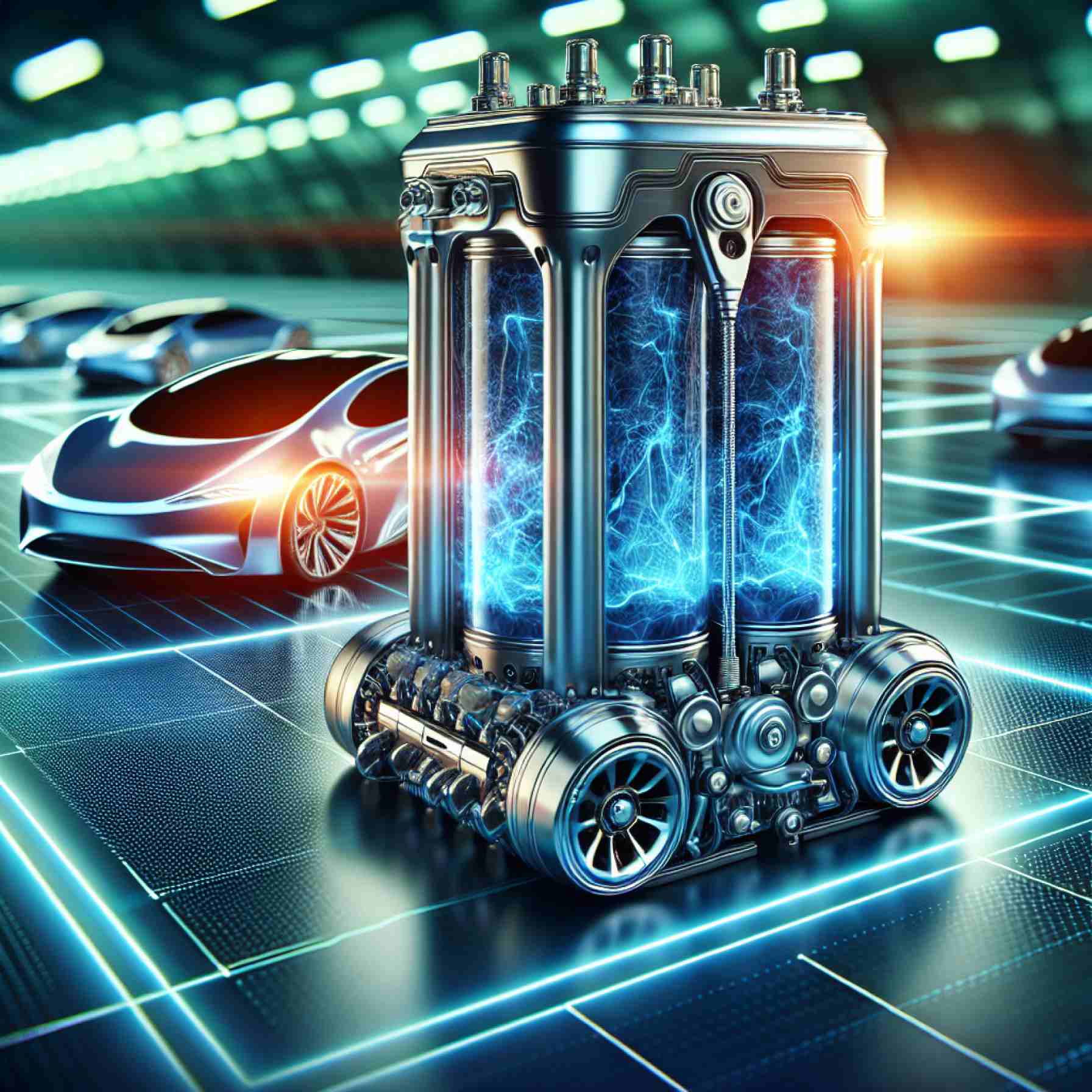
- Stellantis, known for brands like Jeep and Dodge, is advancing electric vehicle technology by focusing on solid-state batteries in collaboration with Factorial Energy.
- Solid-state batteries promise longer ranges (over 600 miles per charge), enhanced safety, faster charging, and are lighter than traditional lithium-ion batteries.
- This innovation could lead to electric vehicles that are more efficient, require less maintenance, and offer a driving experience like never before, starting by 2026.
- Solid-state technology offers environmental benefits, with recyclable materials needed for production, contrasting with the massive extraction of fossil fuels.
- Stellantis’s initiative highlights a shift towards sustainable and high-performance transportation solutions.
Electric vehicle enthusiasts and eco-conscious drivers, hold onto your hats. What’s happening behind the scenes at Stellantis—a powerhouse responsible for iconic brands like Jeep and Dodge—might well redefine how we think about cars. The company has just given a green light to an innovation that could catapult electric vehicles into an entirely new realm: solid-state batteries.
Imagine a world where electric cars travel hundreds of miles on a single charge, recharge in a flash, and operate with increased safety—all while being lighter and more efficient. This isn’t a far-off dream anymore. Stellantis has teamed up with Factorial Energy to bring these innovations from blueprints to highways, with the first solid-state battery vehicles projected to hit the roads by as soon as 2026. Such a milestone represents not just a technical advance but a seismic shift towards greener, more sustainable transportation.
Why all the buzz around solid-state batteries? Traditional lithium-ion batteries rely on liquid electrolytes, which can pose flammability risks. But solid-state technology ditches these liquids for solid materials, enhancing safety considerably. Moreover, they’re about a third of the size and 40% lighter than their predecessors, promising not just a longer range—think over 600 miles per charge—but also faster charging times and longer-lasting performance.
These developments could usher in a future where charging your vehicle is as swift and stress-free as grabbing a morning coffee. Say goodbye to frequent maintenance, expensive repairs, and routine oil changes. Instead, picture a fleet of vehicles that roar with pure electric torque or silently navigate rugged terrains, embodying both prowess and planet-friendly consciousness.
Critics often point to the environmental toll of mining essential for EV batteries, but the numbers paint a different picture. The massive 16.5 billion tons of fossil fuels extracted every year dwarfs the 30 million tons needed for clean energy materials. Plus, unlike oil and gas, these minerals can be recycled, paving the way for a sustainable cycle of use and reuse.
The narrative of automotive advancement is turning a new page, one that balances technological prowess with environmental responsibility. Stellantis and Factorial Energy’s leap forward doesn’t just signify a brighter horizon for car lovers; it’s an inspiration for what’s possible when industry titans prioritize innovation and eco-consciousness in a powerful, harmonious embrace. Here’s to a cleaner, electrified future, where sustainability and performance go hand in hand.
Revolutionizing the Road: Stellantis and the Future of Solid-State Batteries
What Are Solid-State Batteries and Why Are They Revolutionary?
Solid-state batteries are set to redefine the automotive landscape by offering significant advantages over traditional lithium-ion batteries. They utilize solid electrolytes instead of liquid ones, eliminating flammability risks and paving the way for more compact, efficient, and safer vehicle energy storage systems.
Key Benefits:
1. Safety: Solid-state technology replaces flammable liquid electrolytes with non-flammable solid materials, reducing the risk of battery fires.
2. Efficiency: With an anticipated 40% reduction in weight and a third less size, solid-state batteries provide longer driving ranges—potentially exceeding 600 miles on a single charge.
3. Longevity and Fast Charging: They promise faster charging times and longer life cycles, making EV maintenance more akin to that of a conventional internal combustion engine vehicle.
Why Stellantis’s Shift Matters
The collaboration between Stellantis and Factorial Energy to develop solid-state batteries marks a pivotal shift in the EV industry. Stellantis’s venture into solid-state technology is not just about corporate strategy but represents a cornerstone in sustainable automotive engineering.
Industry Impact:
– Environmental Benefits: By reducing dependence on fossil fuels and facilitating the recycling of essential minerals, Stellantis is aligning with global environmental objectives.
– Market Influence: As a major player in the automotive market, Stellantis’s embrace of solid-state batteries could pressure other manufacturers to accelerate their green technology investments.
How To Make the Most Out of an EV Purchase
1. Evaluate Range Needs: Consider if a 600+ mile range will substantially improve your daily routine.
2. Charging Stations: Look into the availability of fast-charging stations in your area, enhancing the convenience of your EV use.
3. Incentives: Check for government incentives or subsidies for EV purchases to offset the initial cost.
Real-World Use Cases and Trends
– Urban Commuters: For those living in cities, the reduced maintenance and operation costs make EVs an economical choice.
– Rural and Long-Distance Drivers: With improved range capabilities, solid-state batteries could make electric vehicles more viable for longer trips.
Challenges and Controversies
Despite the promise, the production of solid-state batteries isn’t without hurdles:
– Cost: Initial production costs are high, which could translate to more expensive vehicles until mass production scales.
– Material Sourcing: Ethical sourcing of minerals remains a critical challenge, though recycling presents a sustainable path forward.
Market Forecasts and Industry Trends
As auto giants like Stellantis invest heavily in solid-state technology, expect significant shifts by 2026. Such advancements may herald a broader transition to solid-state systems across industries, influencing not just cars, but consumer electronics and renewable energy storage.
Conclusion and Quick Tips
– Stay Informed: Keep an eye on developments from Stellantis and Factorial Energy, as these could impact future EV prices and features.
– Eco-Conscious Choices: Support brands that prioritize sustainable technology and ethical sourcing.
– Explore Government Assistance: Use federal and local programs that may offer rebates or tax incentives for EV purchases.
For more insights on innovative automotive technologies and to stay updated on green engineering, visit Stellantis and Factorial Energy.



